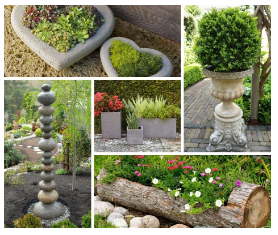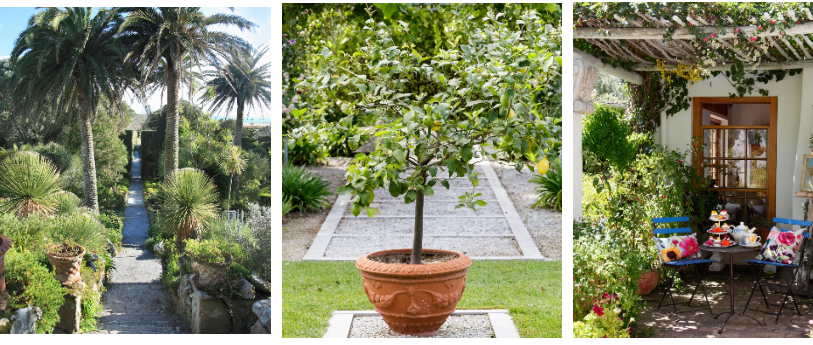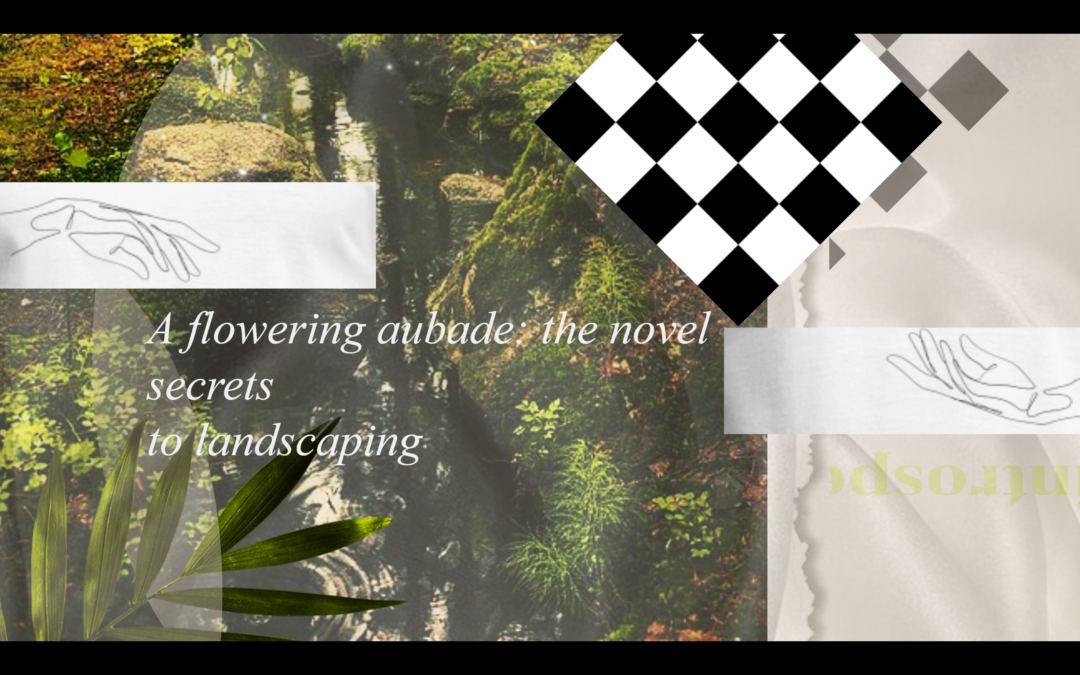Edited By: Howie Nguyen
Designed By: Morouje Sherif
Published By: Howie Nguyen
The secret, the beautiful, the nourishing.
Why do we lack confidence?
The innate self-reflection that terrors in the back of the mind. We doubt ourselves over constant abilities – wherein we can produce immaculate creations through one model of learning but not in the other. We beg the leafy question: why can’t we garden properly without professionals?
Like art, gardening is a fruitful canvas – up to the freeing brush strokes of personal taste and history. Mediterranean, English, and Oriental, are all beautiful methods of ethnic reflection, vying for artistry. Let us examine these various gardening styles, to determine your taste. And it is then, that we will be able to craft something beautiful. Something full of meaning.
In the illusory truth effect, what we see is what we like.
Choose what you love, is always what they say. But why is it always so hard to do that? What do we truly love?
Japanese consultant Marie Kondo places the word perfectly: “The best way to choose what to keep and what to throw away is to take each item in one’s hand and ask: “Does this spark joy?” If it does, keep it. If not, dispose of it.” Just because you dispose of something that has no use, does not mean that you give up all for lost time and expressions of identity. This is an evolutionary experience of self, the lineage of humanity.
The illusory truth effect states that we see (false) claims as truer if we have been continuously exposed to them before. Society enjoys putting the best version of itself online, and when we see such poised figures we immediately lose innovation – one cannot replicate professionalism and put it out if they don’t have the resources or the money. Gardening is of such theory. We lose motivation over glorified images that are tiring and require external resources.
So we beg the question: what makes a garden beautiful?
That completely depends on you. A beautiful garden in your eyes is bountied with vibrant colors, or reflected in ethnic breeds of flowers, a nicely mowed lawn (because who doesn’t love that?), or simple ornaments. Let’s further examine these basics.
Many people take pride in having a lush, green lawn to complement their mulch, soil, and flowers. And to maintain this standard, many people spend thousands of dollars using pesticides and insecticides to control the grass from developing weeds and dandelions. But, there are also ways to maintain a viable garden without chemicals.
Mow high
Mowing your lawn to prevent the lush grass from growing longer is contradicting in its essence, but vital in appearance. However, cutting your grass short is the primary cause of exceeding weed and dandelion growth. So, make sure to not cut your grass too short – keep it around 6 to 8 centimeters tall.
Water deeply
We only water our flowers because we bought them, and put the effort into their growth. Why doesn’t this apply to the widespread grass – the focal point in our gardens? Watering grass at least once a week is just as important as watering any vibrant plant – maintaining its color so it doesn’t shrivel in the hot Canadian summers, and encouraging root growth.
Feed and Aerate
Flowers need compost and moisture, so make sure to place some topsoil and compost on the grass to provide nutrients. Moreover, aerating plants is forgotten and vital. Since grass is stepped on, it is compact and cannot absorb nutrients and water as easily. Aeration is most ideal during the fall – digging a little.
Setting realistic goals and identifying problems
Anyone will be bound to get a few weeks, and that is simply natural. If they are natural outcomes, why do we want to prevent them? If a few weeds do come up, pull the root out by hand. Beneficial insects like ladybugs and wasps can keep pest insects out too, and earthworms encourage aeration. Not only that, plant damage is caused by poor growth, road salt, and pet urine.
Next, let us discuss ornaments. We commonly see porcelain figures in the shapes of animals, elves, and statues – other ornaments include windmills, simple stones, vases, fountains, and waterfalls. Maintaining a full garden comes through with elevations and diverse plants – which ornaments are wonderful at providing, additionally, they are a wonderful means of self-expression which can add to the personalization of your garden – breaking the glorified barrier of effortless perfection. 
Similarly, a nice garden is characterized by diverse breeds of flowers, grasses, and bushes. We shouldn’t be solely attracted to plants because of their immediate beauty, but how they fit within a landscape. On ethics, a diverse landscape is better for the environment and can be easier to maintain, because it prevents pest problems from spreading to the whole lawn.
Modern enchantment, in a few images.
Let us examine a variety of different garden styles that utilize ornamental pieces and various species of flowers in wonderful correlation to the architecture of a home.
The Mediterranean Garden

Characterized by elegant, fragrant, and vibrant tones, a Mediterranean garden flourishes in Egypt as well as the eastside countries of France, Italy, and Greece. The eloquence brims with low maintenance care, architectural plants, gravel, and seeded and potted plants. With the predictions of a continuously hot and dry summer, this garden is wonderful for damper soils. The planting palette follows simple regulations: making sure your plants don’t dry and fade away during the summer.

In late winter you will often find acacias and citrus trees in their glory, accompanied by agapanthus, lavender, palms, Cyprus, and bougainvillea. Ornamental grasses glue up the landscape: tying herbaceous and shrubby plantings together against the nutrient-scarce soil, making the design humble and effortless. You will commonly see porcelain vases, and landscapes accentuated by water fountains and flamboyant plants.
English Garden
The enchanting English garden is the pinnacle of modern-day landscaping. Enchanted with serene pathways, fixed patterns, and bushes, the garden is a token of wonder. When chaos reigns more friendly in an English garden, the gardens are all about order. Neatly clipped hedges, slick bed edges, and lush garden foster where plants stand side by side to create serendipitous charm. Classic flowers include old-fashioned roses, lavender, delphinium, foxglove, and clematis. Arranging plants to mimic the natural course of nature is prominent in such gardens; position plants in color blocks so you have comparative colors side by side. For example, let blue bloomers fade into purple flowers that transcend to violet blossoms.
Including focal points like a water feature, statue, plant structure, gazebo or topiary accentuates the elegance: simply sitting in a way after a causal route.

Oriental Landscape
Also denoted as the “Zen” garden, the calming ambiance characterizes hardscape elements: ornate pavilions, circular bridges, and stone walkways. In larger gardens, you will consistently find multiple pavilions with connected hallways – simply dazzling. The traditional Asia garden is set with many vibrant colors and contrast. As a rule, water features are an absolute must that reflects timeless allure. This could be a simple fountain, a koi pond, or a simple feature that brings the serene sound of water to its essence. Ornaments like the Buddha statues are essential here, and genuine plants that add fiery reds to mellow yellows add layers upon layers of richness. Esoteric, thin trees, rapture bushes, and succulents all in formality combined with timeless lighting combine to create an all-cherished experience that transcends beyond any modern home, to your humble abode.

Vivid imagery, lurking in sight.
The blank canvas that outlines each brushstroke of personality emulates the freedom of expression – the forgotten innovation of gardens. Through the mere shift in adoration, we find true placement in our surroundings and can call out to the vivid visions that lurk in sight. It is at that point, that we recognize to choose what we love and to bind off external whisperings about what will match societal standards. It’s just about the bashful process of making your own decisions, creativity, and trying over and over again. And it is then: that we can produce something beautiful. Something full of meaning.
References
Advisor, H. (2016, November 29). 8 Landscape Design Styles & Ideas: Homeadvisor. Home Improvement Tips & Advice from HomeAdvisor. Retrieved July 22, 2022, from https://www.homeadvisor.com/r/8-landscape-design-styles/
Aloi, P. (2022, July 18). 44 Great Backyard Landscaping Ideas. The Spruce. Retrieved July 22, 2022, from https://www.thespruce.com/backyard-landscaping-ideas-4172952
Canada, H. (2012, November 14). Government of Canada. Canada.ca. Retrieved July 22, 2022, from https://www.canada.ca/en/health-canada/services/home-garden-safety/how-have-healthy-lawn.html
Ebert, J., & Crow, R. (2022, May 25). How to create a mediterranean garden – planting, landscaping and design advice. homesandgardens.com. Retrieved July 22, 2022, from https://www.homesandgardens.com/advice/how-to-create-a-mediterranean-garden
Forney, J. M. (2020, May 11). English garden design. HGTV. Retrieved July 22, 2022, from https://www.hgtv.com/outdoors/gardens/garden-styles-and-types/english-garden-design

